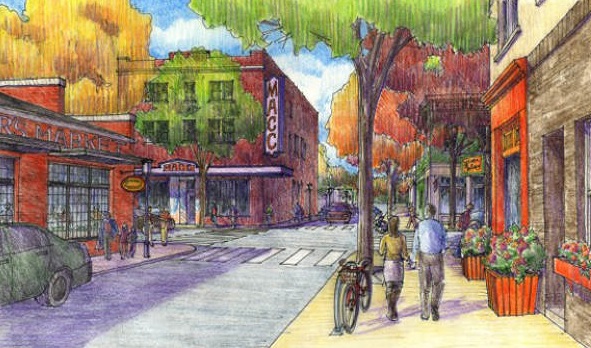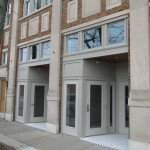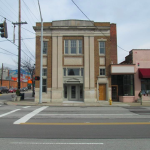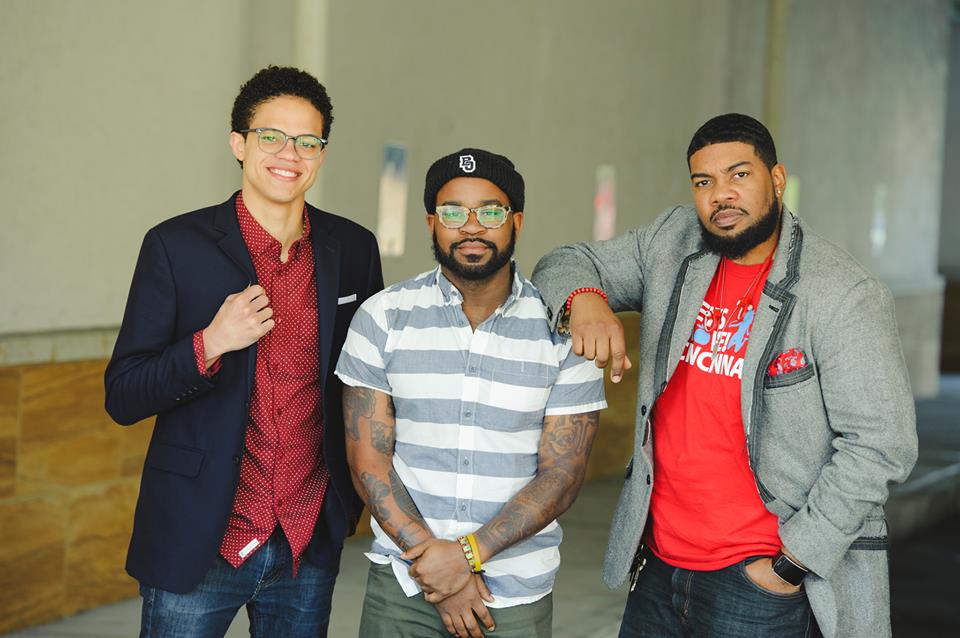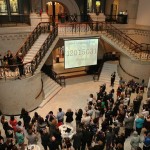Madisonville neighborhood leaders believe that strategic investments over the past few years are finally starting to bear fruit, as is evidenced by the restoration of the historic Fifth Third Bank Building at the corner of Madison Road and Whetsel Avenue.
The $644,000 project was led by the Madisonville Community Urban Redevelopment Corporation (MCURC), and includes a street-level restaurant space with two, two-bedroom apartments on the building’s second floor. The hope is that the project will help stimulate other private reinvestment in the neighborhood.
Built in 1927, the building used to be a bank and still has the vault inside to prove it. Today the 2,800-square-foot street-level “white box” restaurant space is now being marketed to potential tenants. Those interested in the space are asked to contact Matt Strauss, Real Estate and Marketing Manager at MCURC, at 513-271-2495.
Community leaders will gather for a ribbon cutting ceremony next week to celebrate bringing the historic structure back to life.
“MCURC was asked by the community to save this signature building in the heart of the business district,” said Sara Sheets, Executive Director of MCURC. “Our hope is to attract a unique restaurant tenant bringing newcomers to the neighborhood, while offering residents a chance to have a date night in their own neighborhood.”
The Bank Building’s future restaurant tenant will join a growing roster of new dining options nearby.
Lala’s Blissful Bites, a bakery, opened down the street in January; plans for two coffee shops, Mad Llama Coffee by Lookout Joe and CooKoo’s Coffee Shoppe, are in the works; and a commissary retail store from the owner of Mazunte Taqueria is coming soon.
Due to what community leaders attribute to decades of disinvestment and targeted demolition, the Bank Building is one of the few historic buildings still standing in the business district. Many of the surrounding properties are vacant lots, but that too may soon be changing.
Since 2008, the City of Cincinnati has been buying vacant parcels in the area in order to assemble a large site suitable for development. In 2014, the City issued an RFQ to developers on the 7.5 acres of property it had acquired to date, which comprises most of the four blocks that form the intersection of Madison and Whetsel.
City leaders say that the team selected to redevelop these properties will be formally announced in the coming weeks, but early indications point to the Ackermann Group as the leading candidate.
This is all coming at the same time as the $200 million development at Medpace’s campus at Madison Road and Red Bank Expressway, a half-mile west of the neighborhood business district, which includes 250 apartments, 100,000 square feet of commercial space, 250,000 square feet of office space, and a 239-room Dolce Hotel, which is expected to be completed in 2018.
The ribbon cutting ceremony will take place at the Bank Building at 5900 Madison Road at 11am on Thursday, April 28. The Ohio Community Development Finance Fund, Fifth Third Bank, the James A. Schroth Family Charitable Trust, PNC Bank, LISC of Greater Cincinnati & Northern Kentucky, Duke Energy Urban Revitalization Initiative, and the City of Cincinnati provided funding for the project.
